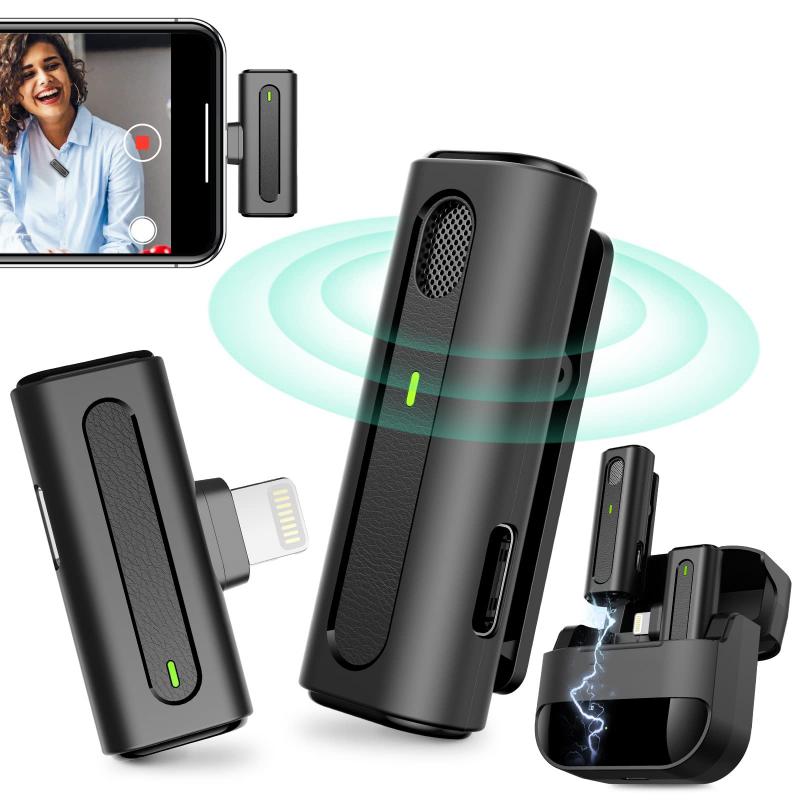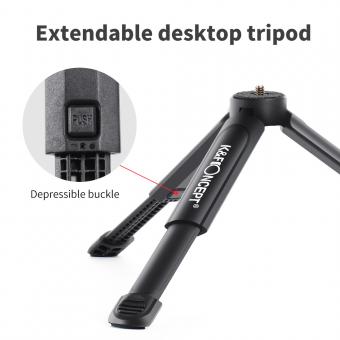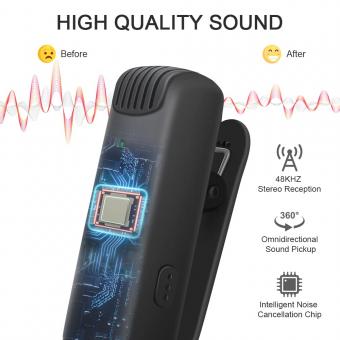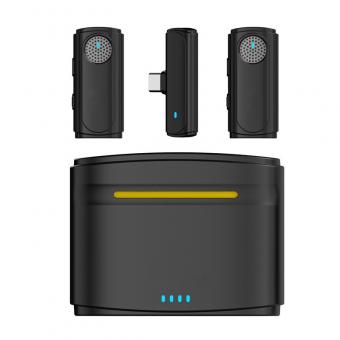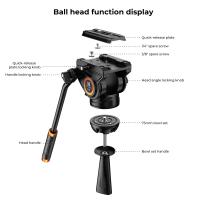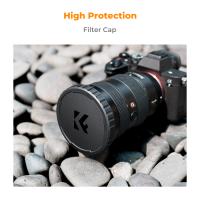What's A Lavalier Microphone ?
A lavalier microphone, also known as a lapel microphone or a clip-on microphone, is a small microphone that is typically worn or clipped onto the clothing of the person speaking. It is commonly used in television, film, and live performances to capture clear and direct audio from the speaker. Lavalier microphones are designed to be discreet and unobtrusive, allowing the speaker to move freely without being hindered by a handheld microphone. They are often used in situations where hands-free operation is necessary or desired, such as interviews, presentations, and public speaking engagements. Lavalier microphones are connected to a wireless transmitter or a wired connection, which sends the audio signal to a receiver or recording device. They are popular due to their convenience, versatility, and ability to capture high-quality sound in various settings.
1、 Definition and Function of a Lavalier Microphone
A lavalier microphone, also known as a lapel microphone or lav mic, is a small and discreet microphone that is typically clipped onto the clothing of the person speaking. It is commonly used in television, film, theater, and public speaking events to capture high-quality audio without being obtrusive or distracting.
The main function of a lavalier microphone is to amplify and capture the sound of the person wearing it, allowing their voice to be heard clearly and intelligibly. It is particularly useful in situations where a handheld microphone would be impractical or visually distracting, such as during interviews, presentations, or live performances.
Lavalier microphones are designed to be lightweight and inconspicuous, often featuring a small capsule that picks up sound and a cable that connects to a wireless transmitter or a wired audio recording device. They are typically omnidirectional, meaning they capture sound from all directions, ensuring that the speaker's voice is captured accurately regardless of their position or movement.
In recent years, advancements in technology have led to the development of wireless lavalier microphones, which offer greater freedom of movement for the wearer. These wireless systems use radio frequencies to transmit the audio signal from the microphone to a receiver, eliminating the need for a physical cable connection.
Overall, lavalier microphones provide a convenient and effective solution for capturing high-quality audio in a wide range of applications. Their discreet design and ability to capture clear sound make them an essential tool for professionals in the audiovisual industry and anyone who needs to deliver clear and professional audio in various settings.

2、 Types and Variations of Lavalier Microphones
A lavalier microphone, also known as a lapel microphone or lav mic, is a small microphone that is typically clipped onto the clothing of the person speaking. It is commonly used in television, film, and live performances to capture clear and high-quality audio.
Lavalier microphones are designed to be discreet and unobtrusive, allowing the speaker to move freely without being hindered by a handheld microphone. They are commonly used by presenters, actors, and public speakers who need to maintain a natural and professional appearance while speaking.
These microphones are omnidirectional, meaning they capture sound from all directions. This allows them to pick up the speaker's voice clearly, even if they turn their head or move around. Lavalier microphones are typically connected to a wireless transmitter, which sends the audio signal to a receiver or directly to a recording device.
There are various types and variations of lavalier microphones available in the market. Some are wired, with a cable that connects the microphone to the recording device or sound system. Others are wireless, providing more freedom of movement for the speaker. Wireless lavalier microphones use radio frequencies to transmit the audio signal, allowing the speaker to move around without being restricted by cables.
In recent years, there have been advancements in lavalier microphone technology. Some models now feature improved noise cancellation capabilities, reducing background noise and improving the clarity of the speaker's voice. Additionally, there are now lavalier microphones specifically designed for use with smartphones and other portable devices, making them more accessible for content creators and vloggers.
Overall, lavalier microphones are a versatile and essential tool for capturing high-quality audio in a wide range of applications. They provide convenience, flexibility, and excellent sound reproduction, making them a popular choice for professionals in the audiovisual industry.

3、 Advantages and Disadvantages of Lavalier Microphones
A lavalier microphone, also known as a lapel microphone or lav mic, is a small microphone that is typically clipped onto the clothing of the person speaking. It is commonly used in television, film, and live performances to capture clear and consistent audio.
Advantages of Lavalier Microphones:
1. Hands-free operation: Lavalier microphones allow the speaker to have complete freedom of movement while speaking. This is particularly useful in situations where the speaker needs to use their hands for demonstrations or presentations.
2. Discreet and unobtrusive: Lavalier microphones are small and can be easily hidden on the speaker's clothing, making them less noticeable to the audience. This is especially important in situations where the microphone should not distract from the speaker or the overall aesthetics of the production.
3. Consistent audio quality: Lavalier microphones are designed to capture audio directly from the source, resulting in clear and consistent sound. They are less prone to picking up background noise or room reverberation, ensuring that the speaker's voice is the primary focus.
Disadvantages of Lavalier Microphones:
1. Limited range: Lavalier microphones are typically omnidirectional, meaning they pick up sound from all directions. This can be a disadvantage in noisy environments or when multiple speakers are present, as it may result in unwanted audio interference.
2. Placement challenges: Proper placement of a lavalier microphone is crucial for optimal sound quality. If not positioned correctly, it can lead to muffled or distorted audio. Additionally, the microphone may rub against clothing or create rustling noises if not secured properly.
3. Potential for visibility: While lavalier microphones are designed to be discreet, there is still a possibility that they may become visible to the audience, especially if the speaker moves around a lot or if the clothing is not suitable for hiding the microphone.
In recent years, advancements in technology have led to the development of wireless lavalier microphones, which offer even greater flexibility and freedom of movement. These wireless systems eliminate the need for cables, allowing the speaker to move around more freely. Additionally, improvements in microphone design and noise-cancelling technology have helped to address some of the disadvantages associated with lavalier microphones, resulting in better overall performance and audio quality.

4、 How to Properly Use and Position a Lavalier Microphone
A lavalier microphone, also known as a lapel microphone or lav mic, is a small microphone that is typically clipped onto the clothing of the person speaking. It is commonly used in television, film, and live performances to capture clear and high-quality audio.
The main advantage of a lavalier microphone is its convenience and versatility. It allows the speaker to have their hands free while still being able to deliver their message clearly. Lavalier microphones are often used by presenters, actors, and public speakers who need to move around or perform physical activities while speaking.
To properly use and position a lavalier microphone, there are a few key points to consider. Firstly, it is important to securely attach the microphone to the clothing, ensuring that it is close to the speaker's mouth for optimal sound capture. The microphone should be positioned slightly below the chin, around 6-8 inches away from the mouth, to avoid plosive sounds and excessive breath noise.
Additionally, it is crucial to check the audio levels and monitor the sound quality throughout the recording or performance. This can be done by using headphones or a monitoring system to ensure that the microphone is picking up the desired sound and that there are no technical issues.
In recent years, advancements in technology have led to the development of wireless lavalier microphones, which offer even more flexibility and freedom of movement. These wireless systems use radio frequencies to transmit the audio signal from the microphone to a receiver, eliminating the need for cables and allowing for greater mobility.
Overall, lavalier microphones are an essential tool for capturing clear and professional audio in various settings. Properly using and positioning them ensures optimal sound quality and enhances the overall experience for both the speaker and the audience.
